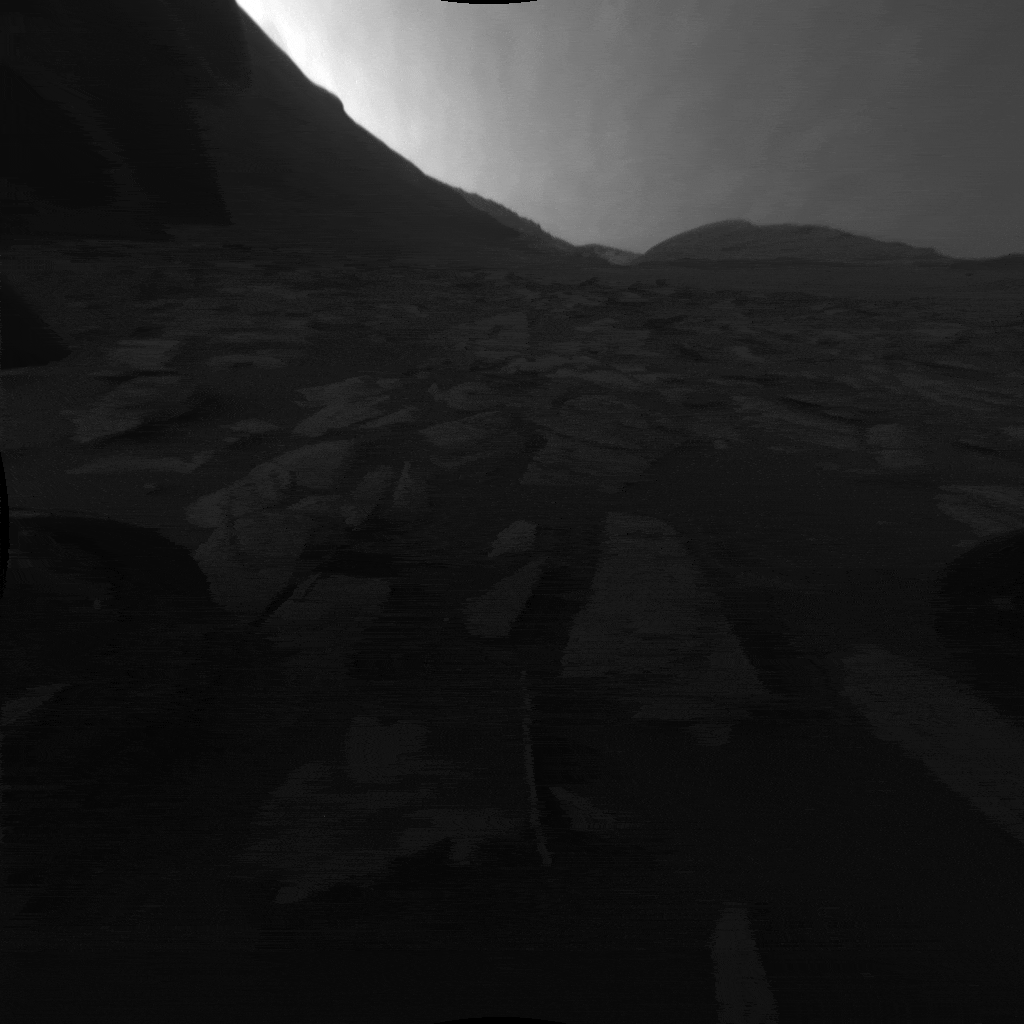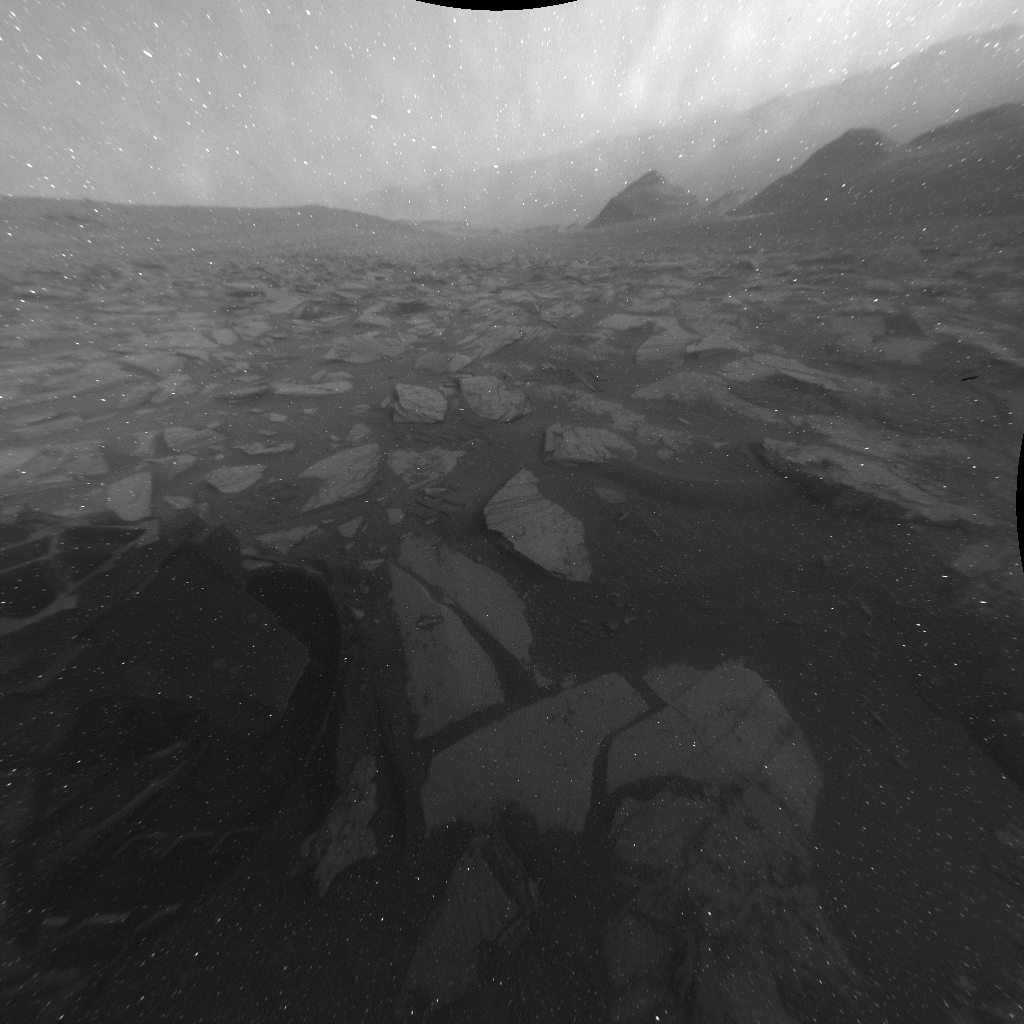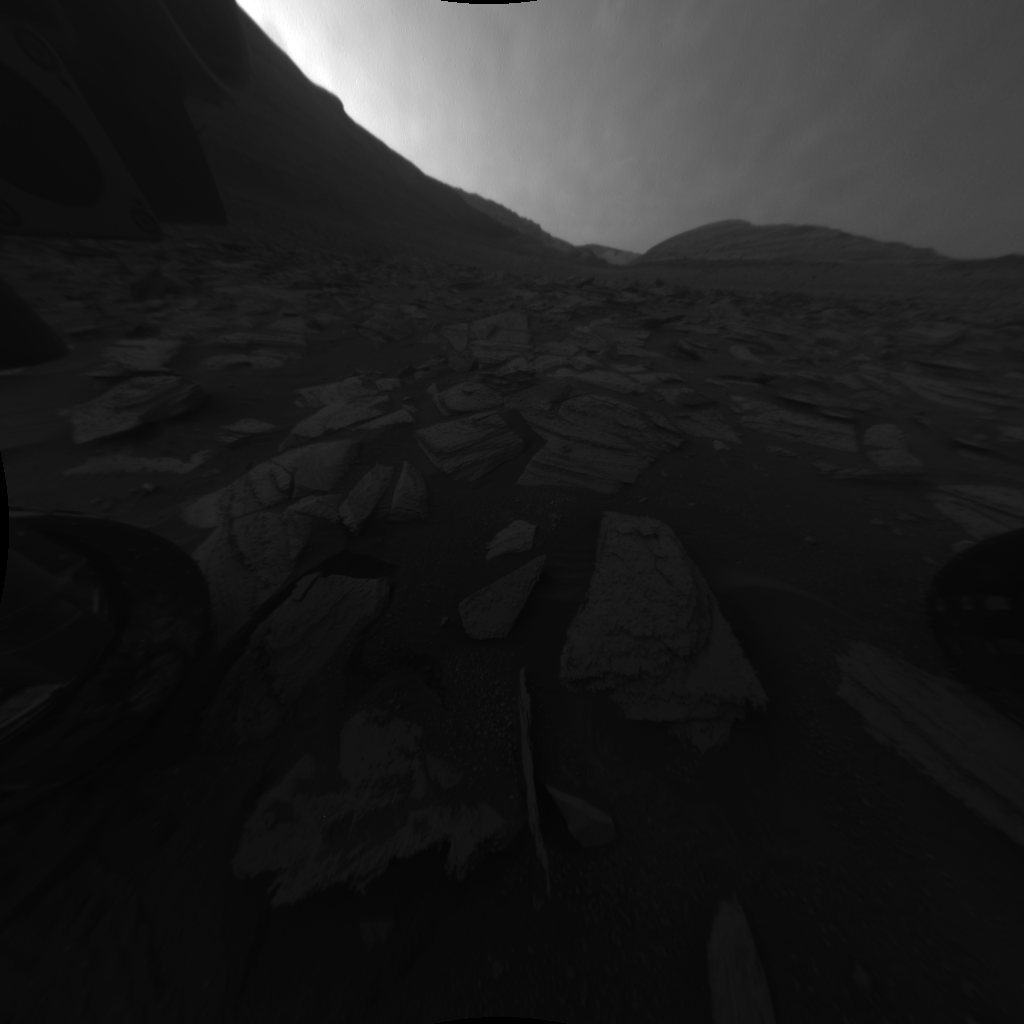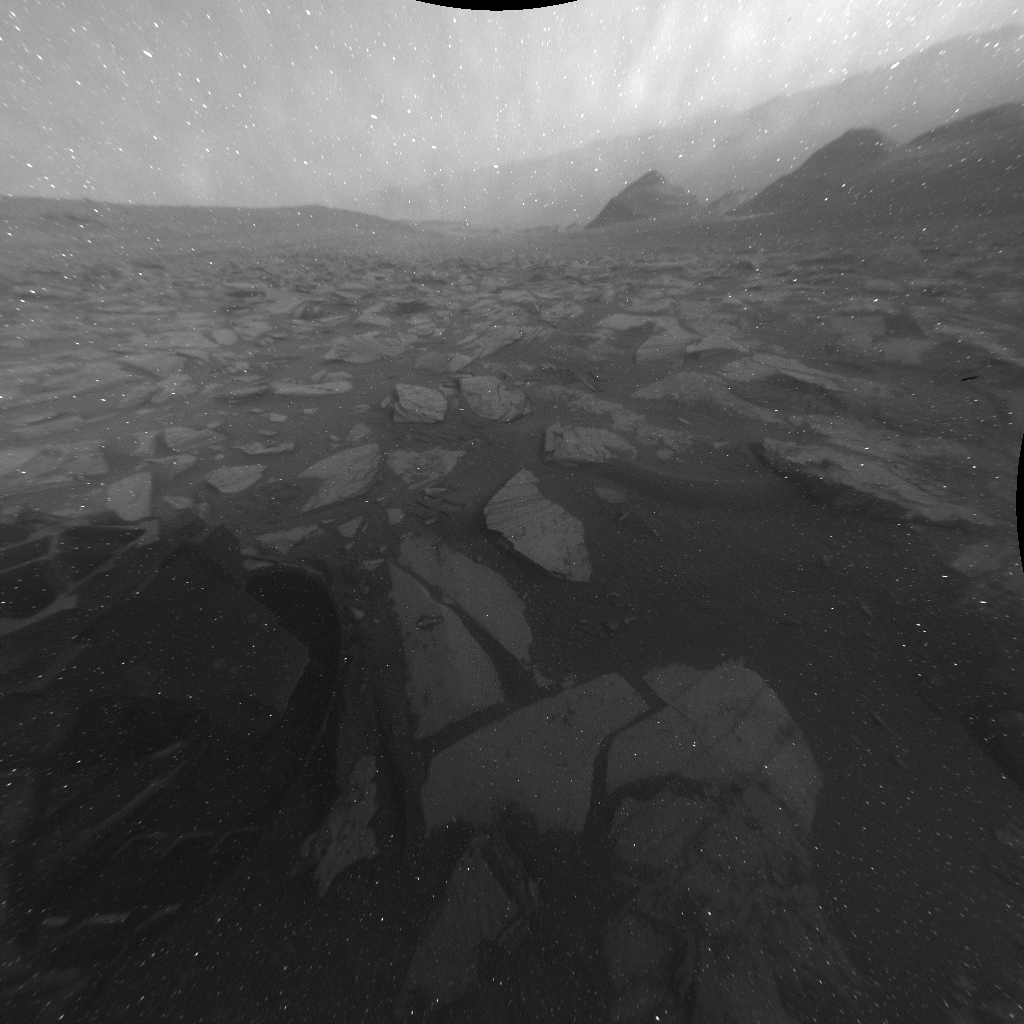Curiosity’s Hazcams Capture a Day on Mars During Conjunction

| Credit | NASA/JPL-Caltech |
|---|---|
| Language |
|

NASA’s Curiosity Mars rover recorded two 25-frame videos showing the passage of 12 hours on Nov. 8, 2023, the 4,002nd Martian day, or sol, of the mission. The commands to capture the images that make up these videos were among the last that engineers beamed up to the rover before the start of Mars solar conjunction – a period of several weeks when the Sun is between Earth and Mars. Because the Sun’s plasma can interfere with radio communications, NASA’s Mars missions stand down from sending commands to their spacecraft during conjunction, bringing the missions to a temporary standstill. (The spacecraft still radio back their health status during this period.)
The images were captured with Curiosity's front and rear Hazard-Avoidance Cameras, or Hazcams. Rover drivers use these black-and-white cameras to plan safe drive routes. A long series of images can be put together to create a video so that scientists can look for passing clouds or dust devils, which teach them more about the Martian environment. The perfect time for doing this type of work is when Curiosity is less active for long stretches, as it was during Mars solar conjunction. The lack of robotic arm motion and driving during conjunction allowed the Hazcams to image for 12 hours of a day – from 5:30 a.m. to 5:30 p.m. local Mars time – for the first time. While these Hazcam videos didn’t reveal any clouds or dust activity, they did capture the passage of time as the Sun rose and set.
The main video shows the front Hazcam's view looking southeast along Gediz Vallis, a valley found on Mount Sharp, the base of which Curiosity has been ascending since 2014. The sky brightens during sunrise in the east (left of image), and the shadow of the rover’s stationary 7-foot (2-meter) robotic arm moves across the ground like that of a sundial. The rover’s two front wheels are visible on each side of the frame; at upper left is a circular calibration target mounted on the shoulder of the robotic arm. Engineers use the target to test the accuracy of the Alpha Particle X-ray Spectrometer, an instrument that detects chemical elements on the Martian surface. In the middle of the day, the camera’s autoexposure algorithm settles on exposure times of around one-third of a second; as evening turns to night, that exposure time grows to more than a minute, causing typical sensor noise known as "hot pixels" that appear as snow across the final image.
Figure A shows the rear Hazcam’s view as it looks northwest down the slopes of Mount Sharp to the floor of Gale Crater. The rover’s right rear wheel is visible, along with the shadow of Curiosity’s power system. The first few frames have many hot pixels. Additionally, the brightness of the afternoon sunlight saturates the Hazcam’s sensors, giving the Sun a distorted, blob-like appearance. As the signal bleeds across the pixels, it also creates rows of white pixels that spike out from the Sun. Sitting near the rover’s warm power source, the rear Hazcams are more susceptible to sensor noise. In this video, excess heat creates artifacts that are seen throughout the clip. A small black artifact that appears at the left midway through the video, during the 17th frame, resulted from a cosmic ray hitting the camera sensor.
The images in these two videos have been re-projected to correct the wide angle of the Hazcams’ lenses. The speckled appearance of some of the individual images, especially prominent in the rear-camera video, is due to 11 years of Martian dust settling on the lenses.
Curiosity was built by NASA’s Jet Propulsion Laboratory, which is managed by Caltech in Pasadena, California. JPL leads the mission on behalf of NASA’s Science Mission Directorate in Washington.
For more about Curiosity, visit:
http://mars.nasa.gov/msl


